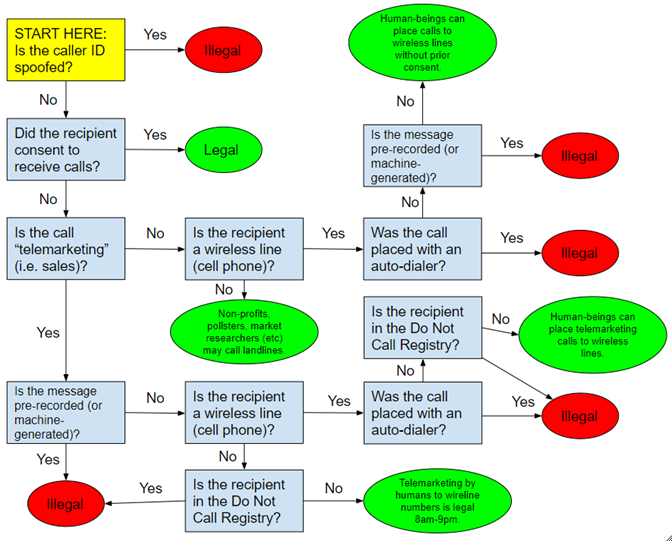Home / Our News & Events / Blogs / Are my customers making illegal rob...
Guest blog by Andrew Ward
This article was first published at https://www.awardconsulting.com/are-my-customers-making-illegal-robocalls/.
If you qualify for an extension to the June 30 STIR/SHAKEN deadline in the TRACED Act, you are required to implement Robocall Mitigation in your network. Robocall Mitigation is all about making sure that you are not the SOURCE of illegal robocalls. But what if you are?
For each of the following scenarios, take a guess. Is this legal or illegal?
As a consumer, I don’t particularly want to receive any of these calls (our school district now communicates with me by email, thank goodness) – but that doesn’t necessarily mean they’re illegal.
As a service provider, you may well have paying subscribers who place large numbers of calls and you have a legal requirement to mitigate illegal robocalls in your network. So how do you handle this? How can you help your subscribers to operate legally, so you can meet your obligations?
Important note: I am not a lawyer. In this article I’ll focus on what makes robocalls illegal (with references), but this does not count as legal advice, and we won’t be able to cover every scenario. My goal is to give you an overview of the topic so you can talk intelligently about the issue.
The rules surrounding high-volume calls depend on a variety of factors, including:
This doesn’t capture every detail of the rules, but I put together the flow-chart below to help you (and your business / non-profit customers) understand the general principles for what makes something a legal or illegal call. Start at the top-left.

This chart is based on the following reference materials, which contain some additional details that aren’t captured in the diagram.
✓ FCC Consumer Guide and FAQs about Robocalls
✓ FTC Do Not Call Registry
Okay, okay. In case you need it, here are the answers to our earlier scenarios:
As STIR/SHAKEN is rolled-out across the country, and as more robocall blocking and robocall mitigation tools are inserted into the network, many organizations that make high volumes of legal calls are concerned that their calls could incorrectly be marked as spam by these systems.
This is a legitimate concern, and if any of your subscribers are worried, I’d suggest they check out the following links.
Ultimately, it’s your customer’s responsibility to make sure that they’re complying with all the rules. But it may well be your responsibility to implement a robocall mitigation program – so you’re not off the hook.
If you have customers who are placing large volumes of outbound calls then I’d recommend using a software solution (like Equinox’s TeleLink solution) to monitor for suspicious outgoing calls as part of your robocall mitigation program. And you should work with your regulatory consultant / lawyer (i.e., not me!) to figure out what other processes you need to have in place.
If you have mostly residential lines, you can breathe easier, but you still need to put together a formal plan with written processes that you follow that can reasonably be expected to reduce illegal robocalls in your network.
Good luck!
Contact awardconsulting.com to learn more.
Andrew Ward is CEO of Award Consulting, a team of technical consultants focused on the needs of small ILECs and CLECs, particularly those who use Metaswitch products. You can sign up to receive his articles at https://www.awardconsulting.com/newsletter.